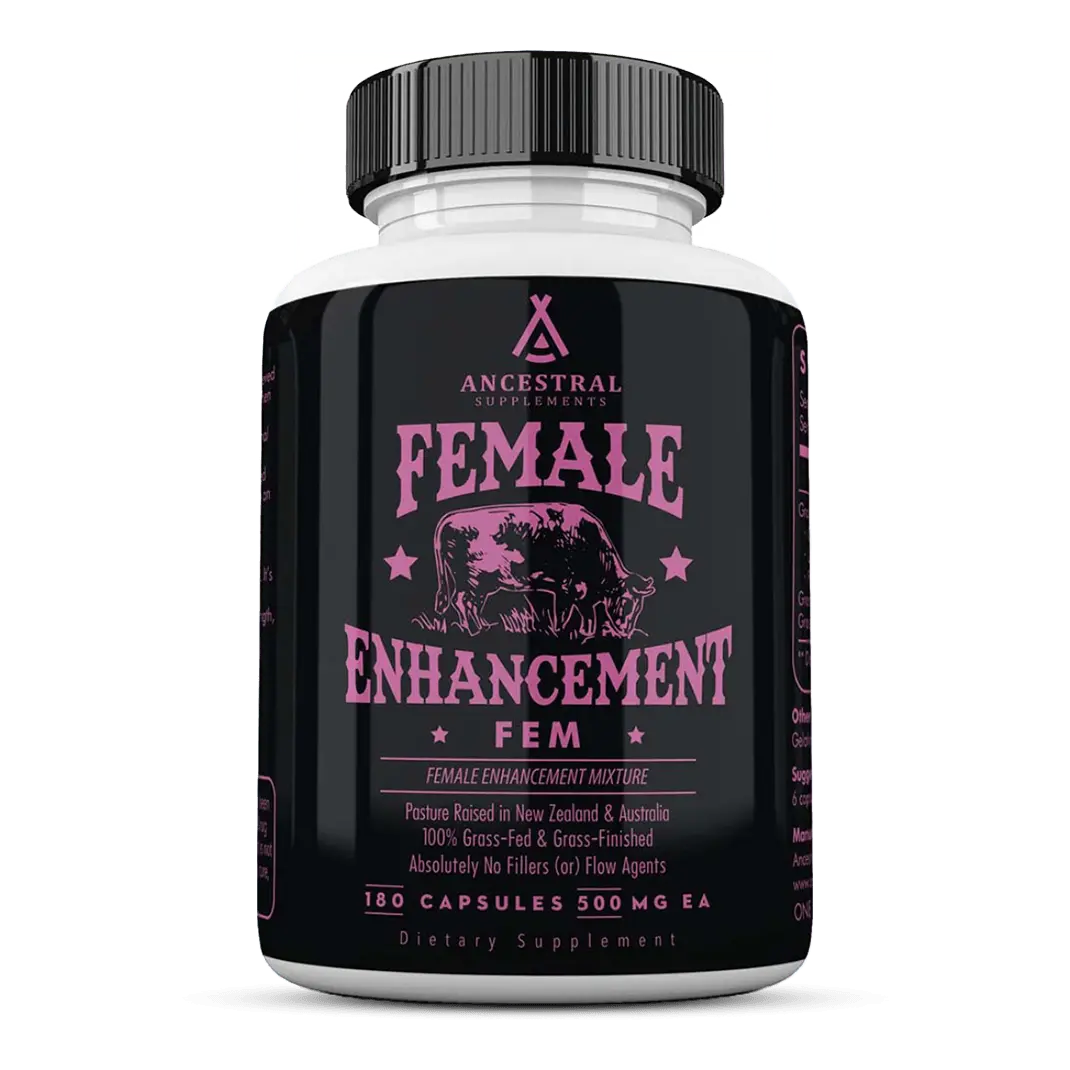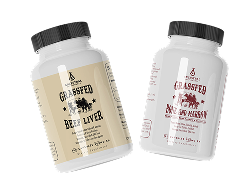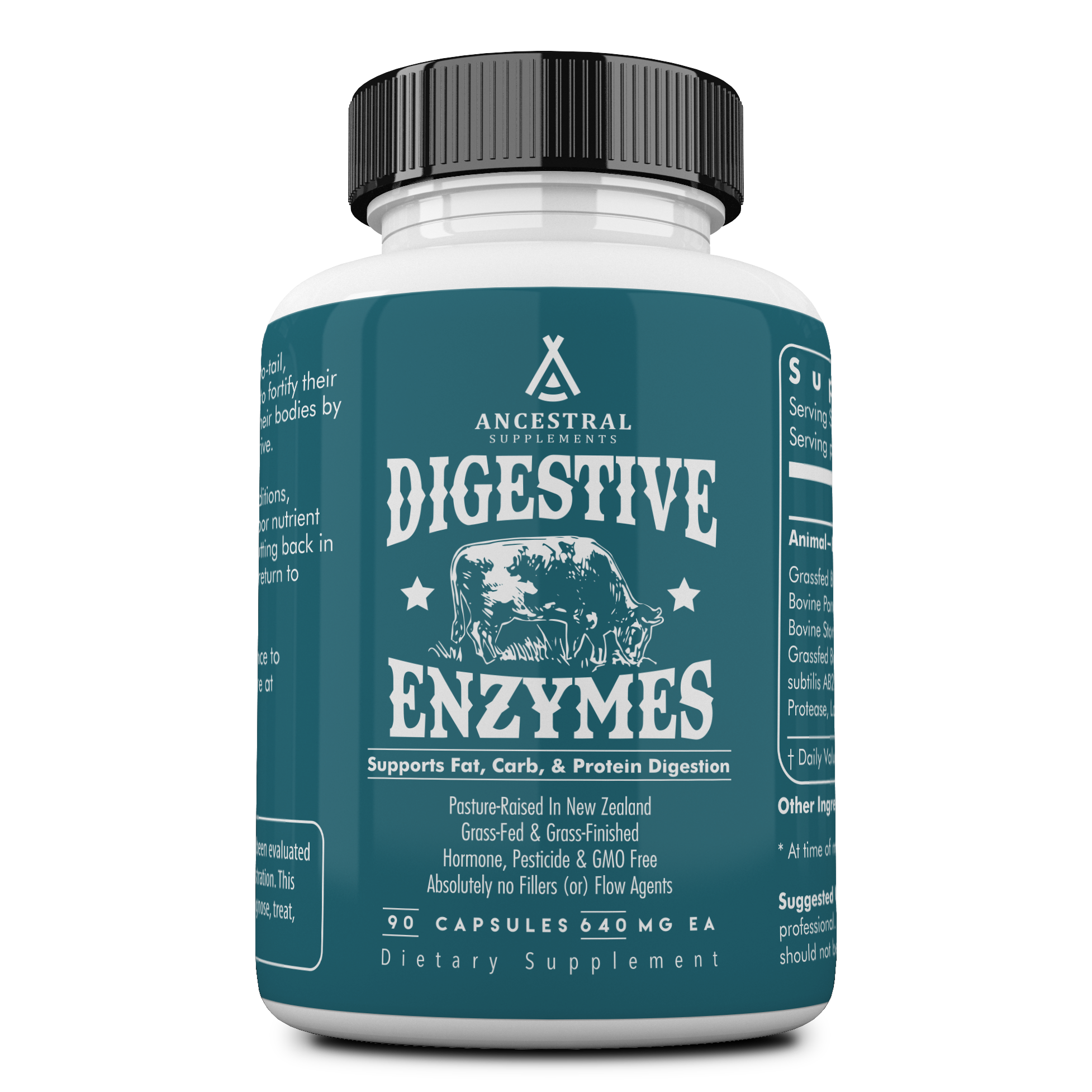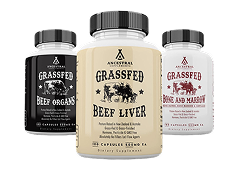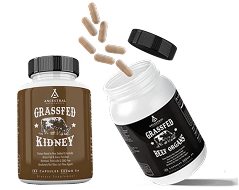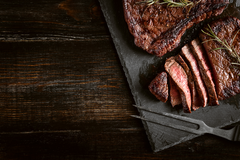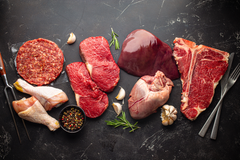What Does Liver Taste Like? Preparation Tips & Recipe Ideas

For thousands of years, liver has been included in traditional diets, including those of ancient Egyptians, Native American tribes, and traditional Chinese medicine practitioners, who all valued liver (and other organ meats) for its strength-giving properties.
As much as possible, our ancestors didn’t waste any part of the animals they raised or hunted. Organ meats—especially liver—were considered highly valuable due to their dense nutritional content (and studies back this up still today).
In fact, many hunter-gatherer groups would eat the liver first after a successful hunt. Some even ate raw liver (which can be safe when carefully prepared the right way).
Today, liver remains a bit of a nutritional paradox. On one hand, it's widely respected for its health benefits, yet it's often avoided due to its bold flavor. If you're new to cooking or eating liver and are looking for ways to make it more palatable, this guide will walk you through everything you need to know, starting with why it’s worth trying liver in the first place.
Below, we'll cover:
-
Why liver is called "nature’s multivitamin"
-
What liver actually tastes like (and how types compare)
-
How to reduce the strong taste
-
Delicious ways to prepare it from around the world
Why Eat Liver?
Liver is very concentrated in a number of essential nutrients. It's considered one of the most nutrient-dense foods on the planet and is even referred to as “nature’s multivitamin.”
Liver is packed with:
-
Preformed vitamin A (retinol): Supports vision, immune health, skin repair, and reproductive function.
-
B vitamins (especially B12, folate, and riboflavin): Vital for energy, mental clarity, cognitive function, red blood cell production, and healthy metabolism.
-
Iron: Liver contains heme iron, the most bioavailable form, which helps prevent anemia and boosts energy levels.
-
Protein: High-quality amino acids support tissue repair, immune health, muscle maintenance, and exercise/muscle recovery.
-
Copper, zinc, selenium, and choline: Support thyroid function, fertility, and neurological health.
With this kind of nutrition combination, it’s no wonder liver is prized as a superfood and sought out by people aiming to boost their intake of beneficial vitamins, minerals, enzymes, protein, and fatty acids.
What Does Liver Taste Like?
Liver has a somewhat strong, distinctive flavor that not everyone is a fan of. That said, you only have to eat a small amount of liver to reap its benefits, since it's so packed with nutrients.
Liver's taste can be described as:
-
Rich: Liver has a deep, dense flavor that feels full and hearty on the palate.
-
Metallic: The high iron content gives liver a flavor similar to the taste of metal.
-
Earthy: Liver can have a natural, slightly musky flavor, like the smell of soil or mushrooms.
-
Slightly bitter: Some livers have a faint bitterness, especially if overcooked, which can taste a little sharp or tangy.
This "bold" taste of liver is primarily due to its high iron and mineral content, especially in beef liver. The texture can also be dense and creamy, depending on how it's cooked.
Flavor Comparison of Different Types of Liver
Not all liver tastes the same; its flavor can vary quite a bit depending on the animal it comes from, such as chicken liver vs. beef liver. Factors like the animal's age, diet, and fat content all influence the texture and intensity of the liver’s flavor.
Among the options, chicken and calf liver tend to be the most popular thanks to their milder, more approachable taste, making them a great choice for those new to eating liver and other organ meats.
Here's how different types of liver compare in terms of their typical taste and texture:
-
Beef liver: Has a strong, slightly metallic, and gamey taste.
-
Chicken liver: Tends to be milder and smoother, often described as slightly sweet and earthy.
-
Calf liver: More delicate than beef liver and a great starting point for beginners. It's also called veal liver and boasts a higher content of protein, vitamins, and minerals compared to beef liver.
-
Duck or goose liver (like foie gras): Fatty, rich, and buttery tasting.
Factors That Affect Liver’s Taste
Aside from the animal itself, several other factors can influence how liver tastes:
1. Age of the Animal
As animals age, their liver develops a denser structure and accumulates more iron and other compounds, which can give it a stronger, more intense flavor.
Younger animals, like calves or chickens, have livers that are softer in texture and milder in flavor. That’s why calf liver is often recommended for beginners, since it’s tender and has a more subtle taste compared to the more robust, gamey flavor of beef liver from mature animals.
2. Diet and Farming Conditions
The animal’s diet has a huge impact on how its liver (and other parts, including "muscle meat") tastes. Grass-fed or pasture-raised animals (such as cattle raised in New Zealand and Australia) typically yield liver with a cleaner, less "off-putting" flavor. Their organs also tend to be lower in toxins and richer in nutrients, such as healthy fatty acids, which can also enhance the taste.
In contrast, animals raised on grain-heavy or processed feed may produce liver that tastes more pungent or has a heavier, fattier aftertaste.
3. Freshness
Fresh liver has a smoother, more delicate flavor, while liver that’s been stored too long can become overly metallic, sour, or bitter.
Liver is extremely perishable and should be consumed soon after it’s butchered or properly frozen. For the best taste, use liver within a day or two of purchasing it or thawing it.
4. Cooking Method
Liver is very easy to overcook, which is one of the biggest reasons people say they don’t like it!
When overcooked, liver becomes tough, dry, and chalky, with a strong bitter edge. To make liver more palatable, focus on cooking it minimally.
Gentle cooking methods, like searing liver briefly on medium heat or slow-cooking in pâtés, can help retain moisture and soften the flavor of liver. Using acidic ingredients (like lemon juice or vinegar) in marinades can also help tone down bitterness and improve the overall taste.
How to Make Liver Taste Better
Not a fan of liver's strong taste? Here are some tricks to make liver more enjoyable (or at least tolerable!):
-
Soak it: Soak liver in milk, lemon juice, or vinegar for 30 minutes to 2 hours before cooking to reduce bitterness and iron taste.
-
Pair it with the right flavors: Onions, garlic, bacon, apples, and herbs like rosemary and thyme can help balance liver's intensity.
-
Cook it gently: Searing liver quickly in butter or ghee and leaving it slightly pink inside preserves its tenderness and flavor.
-
Mix it with meat: Blending liver into ground meat, meatballs, or stews can dilute the flavor while keeping the nutritional boost.
Tips for Buying, Prepping, & Freezing Liver
Knowing how to choose the best quality liver, how to prep it, and when to freeze and defrost it can go a long way in making liver palatable and improving the texture.
Buying Tips:
-
Choose pasture-raised or grass-fed for better taste and nutrient content.
-
Buy from a trusted butcher or local farm for freshness and quality.
-
Look for firm, moist pieces without discoloration or strong odor.
-
Look for chicken or calf liver if you prefer a mild flavor.
Prepping Tips:
-
Rinse liver and pat it dry before cooking it to remove any residue.
-
Trim any veins or connective tissue for a smoother texture.
-
Soak it in milk or lemon water for 30–60 minutes to reduce bitterness.
-
Cook gently, such as pan-searing or sautéing over medium heat, until it's just done (remember: overcooking makes it tough and chalky).
Freezing Liver:
Freezing liver is a smart way to preserve both its flavor and nutrient content. Here's how to do it right:
-
Use fresh liver: Freeze it as soon as possible after purchase (ideally within 1–2 days).
-
Portion it out: Cut the liver into individual portions before freezing, so you only defrost what you need.
-
Wrap it tightly: Wrap each portion in plastic wrap or parchment paper to prevent freezer burn.
-
Store it in an airtight container or freezer bag: After wrapping, place the portions in a heavy-duty zip-top freezer bag or airtight container. Squeeze out excess air to maintain freshness.
-
Label and date it: Liver can be frozen for up to 3–4 months for best quality.
How to Defrost Liver:
-
Thaw in the fridge overnight: Place the liver on a plate or in a container to catch any juices.
-
Avoid microwaving or thawing at room temperature, as this can lead to uneven defrosting and texture changes.
Popular Liver Dishes Around the World to Try
-
Liver and Onions (U.S. & U.K.): A classic comfort food that's typically made with beef or calf liver and caramelized onions.
-
Pâté and Foie Gras (France): A smooth, rich spread made from chicken, duck, or goose liver.
-
Liverwurst and Braunschweiger (Germany): Seasoned liver sausages, often eaten on bread or crackers.
-
Middle Eastern Liver Kebabs: Skewered liver pieces grilled with spices.
-
Asian Liver Stir-Fries: Often cooked quickly with soy sauce, ginger, garlic, and veggies.
Here’s a simple and beginner-friendly liver recipe that balances flavor and texture, perfect for anyone new to eating liver:
Easy Pan-Seared Liver With Onions:
Ingredients:
-
½ lb chicken or calf liver, trimmed
-
1 cup milk (for soaking)
-
1 medium yellow onion, thinly sliced
-
2 tbsp butter or ghee
-
Sea salt and black pepper to taste
-
Optional: garlic powder, thyme, or balsamic vinegar splash
Instructions:
-
Soak the liver in milk for 30–60 minutes in the fridge, then drain and pat dry.
-
Heat butter in a skillet over medium heat and sauté onions until golden and soft (about 10–12 minutes). Remove and set aside.
-
Season liver with salt, pepper, and optional herbs.
-
Sear liver in the same pan for about 2–3 minutes per side, just until browned outside and slightly pink inside.
-
Top with sautéed onions and serve warm.
FAQs About Liver
What does beef liver taste like compared to chicken liver?
Beef liver is stronger, more metallic, and slightly bitter, while chicken liver is usually milder and creamier.
How can I reduce the strong taste of liver?
Soaking liver in milk or acid (like vinegar or lemon juice), not overcooking it, and pairing it with flavorful ingredients can help tone down its bold flavor. It's also helpful to buy fresh, high-quality liver, which can greatly improve the taste and texture (just like with other cuts of meat!).
What are the best side dishes to serve with liver?
Mashed potatoes, sautéed greens, roasted root vegetables, or apples cooked in butter all complement liver well.
How do I know when liver is cooked properly?
The inside should be slightly pink and tender. Overcooked liver becomes dry, chalky, and bitter, so keep the cooking time brief.
Are liver supplements a good alternative to fresh/cooked liver?
Liver supplements, such as beef liver capsules, are very convenient and a great way to obtain many essential nutrients, especially when you choose high-quality, grass-fed liver
Conclusion
Liver may not be everyone’s favorite food at first bite. However, it’s worth exploring liver and giving it a try for its unmatched nutrition (there's a reason it has such a rich cultural culinary history!).
By choosing the right type of liver, using proper cooking methods, and experimenting with classic recipes, you might just find a preparation you love that makes liver something you actually look forward to eating.
If the taste of liver still isn’t your thing after trying the methods above, try our Grass Fed Beef Liver supplements, an easy, no-cook way to get all the nutrients liver has to offer without any of the strong flavor. Dried (dessicated liver) is basically nature’s multivitamin in capsule form, made from 100% grass-fed, freeze-dried liver with no additives and no nonsense. It's packed with essential vitamins like A, D, and B12, plus iron, magnesium, and healthy fats that support energy, immunity, skin, hormonal health, and much more.

